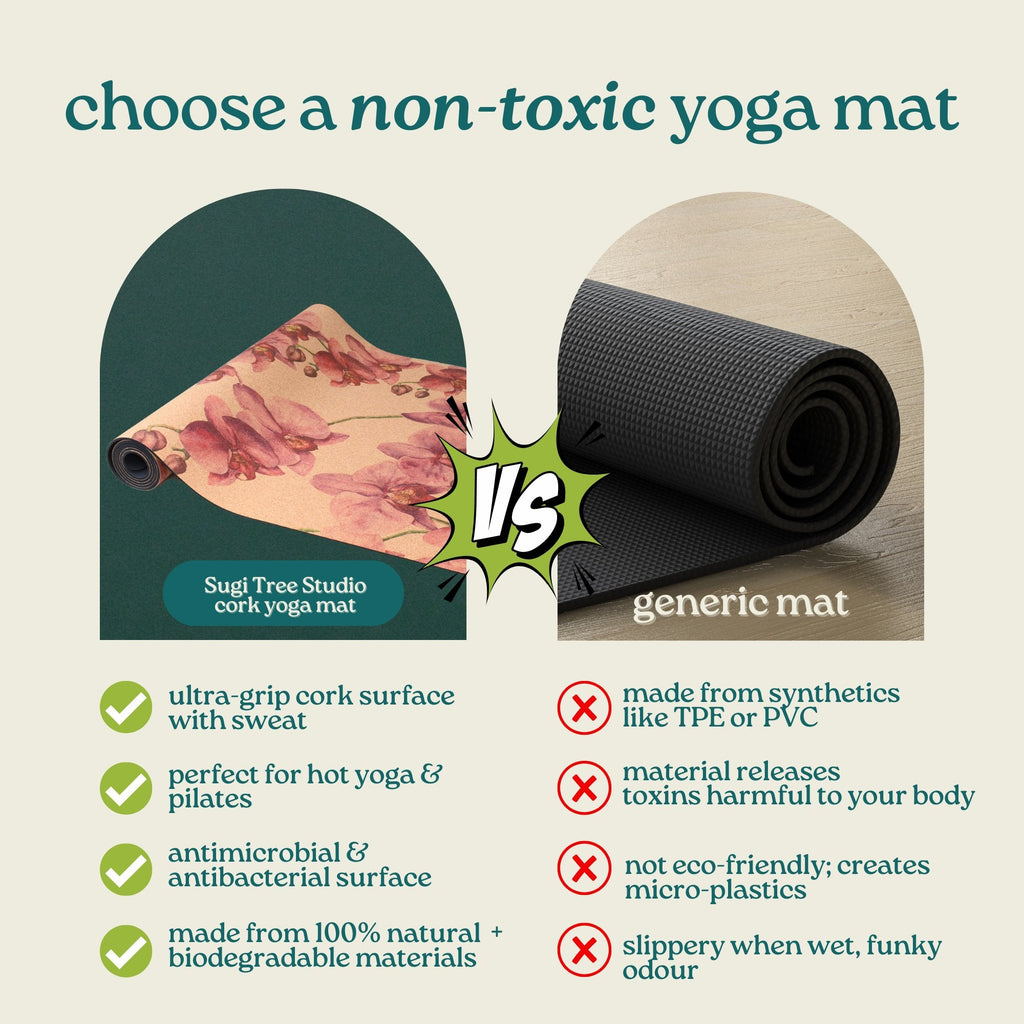In recent years, the market for yoga mats has expanded, offering a variety of materials and features to suit practitioners' preferences. Among the most common materials used in yoga mats are PVC (Polyvinyl Chloride) and TPE (Thermoplastic Elastomer). While these materials may offer convenience and affordability, their production processes and environmental footprints raise significant concerns.
In this article, we delve into the environmental and health implications associated with PVC and TPE yoga mats. From the additives used in their production to their long-term impact on human health and the planet, we explore why making informed choices about yoga equipment goes beyond personal preference—it's a conscious decision that reflects our commitment to sustainability and well-being.
PVC:
Additives: PVC mats often contain a cocktail of additives to enhance their properties. These additives may include heat stabilizers to prevent degradation during manufacturing, lubricants to improve flexibility, and plasticizers to enhance softness. However, many of these additives are known to be harmful to human health and the environment.
Health Risks: The additives used in PVC mats, such as heavy metals like lead, cadmium, and organotin compounds, pose serious health risks. Exposure to these toxins through inhalation or skin contact can lead to organ damage, neurological disorders, and developmental issues, particularly in children and pregnant women.
Environmental Impact: PVC mats are notorious for their non-biodegradability and limited recyclability. When disposed of improperly, they end up in landfills where they release harmful chemicals into the soil and groundwater. Moreover, the production and incineration of PVC mats release toxic pollutants into the air, contributing to environmental degradation and public health concerns.
TPE:
Manufacturing Process: TPEs are a class of materials that combine the properties of thermoplastics and elastomers, typically derived from petroleum or natural gas. TPE mats are praised for their flexibility and ease of production compared to PVC mats. While TPEs may have a lower carbon footprint compared to PVC, their production still relies on non-renewable fossil fuels, contributing to resource depletion and greenhouse gas emissions.
Health Risks: TPE yoga mats generally have a lower risk of off-gassing harmful chemicals compared to PVC mats, making them safer for indoor use. However, TPE mats may still release volatile organic compounds (VOCs) and other chemicals during use, especially when exposed to heat or sunlight.
TPE compounds come in various chemical compositions, each with its unique environmental effects. While some formulations may be more environmentally friendly than PVC, others may still pose risks to human health and ecosystems. This variability makes it challenging to assess the overall environmental impact of TPE mats and underscores the need for transparency and regulation in the industry.
Recycling Challenges: While some TPE products can be recycled in closed-loop systems, mainstream recycling options are limited, further adding to environmental concerns.
The Bottom Line:
Long-Term Impact: Despite their short-term affordability and convenience, both PVC and TPE mats contribute to environmental degradation and health risks over time. Prolonged use and improper disposal of these mats exacerbate pollution and harm ecosystems, underscoring the need for sustainable alternatives.
Alternative Solutions: Opting for eco-friendly materials like natural rubber or cork in yoga mats prioritizes sustainability and supports a healthier practice. Cork yoga mats, for example, are biodegradable, renewable, and free from harmful chemicals, offering a more environmentally friendly option for conscientious practitioners.
Choosing PVC and TPE-free yoga mats isn't just about personal health; it's a conscious decision to protect our planet and promote a more sustainable future for all.






